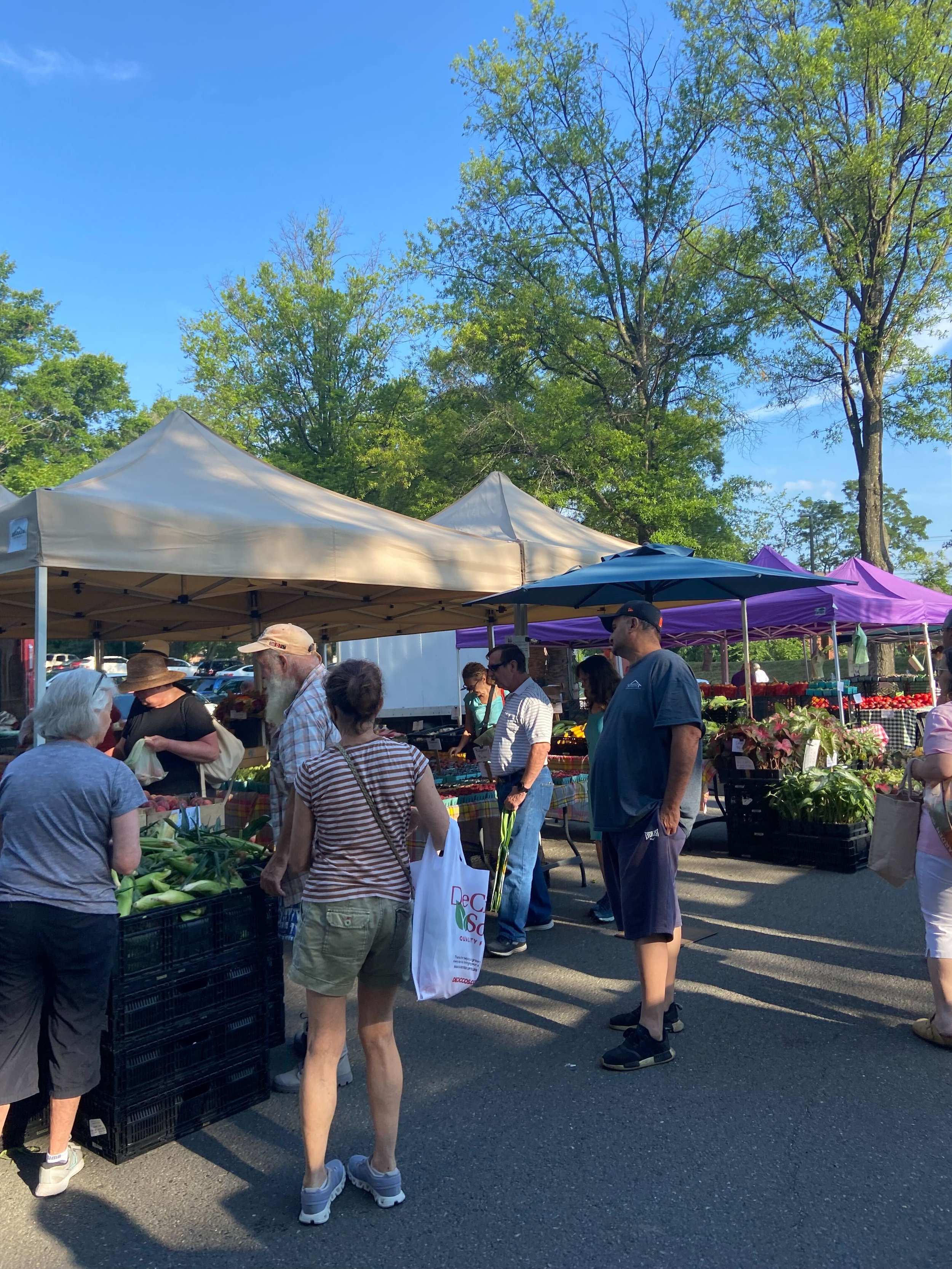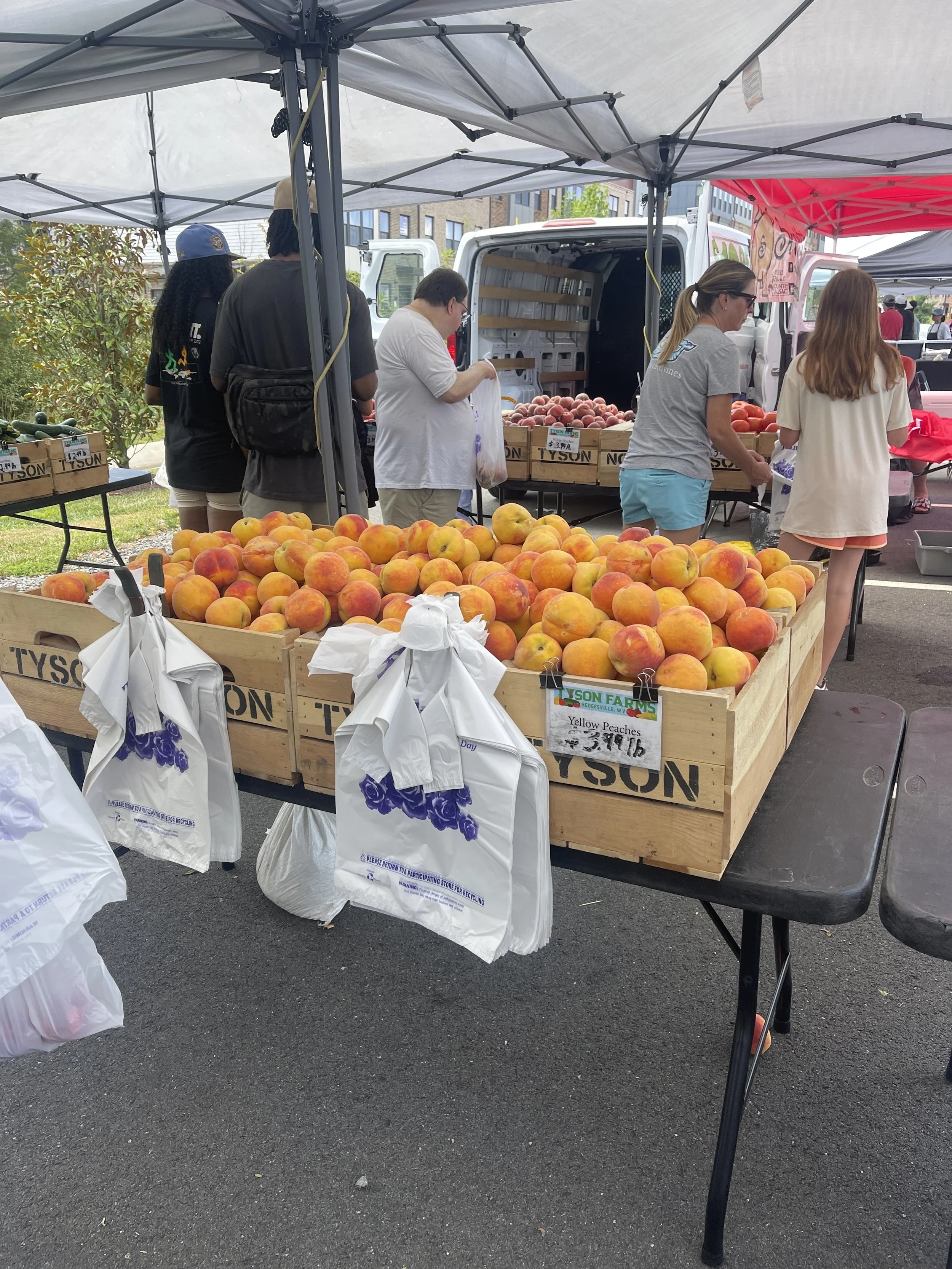How to Go
Plastic-Free
Ready to phase out single-use plastic at your farmers market? Get started with these five steps.
1. Evaluate your market’s relationship with plastic.
Farmers Markets promote sustainability by sourcing locally-grown food and providing products in very minimal plastic packaging. The excessive use of plastic bags in the markets directly contradicts these ideas. Is your market contributing to the problem of plastic pollution or leading the way as part of the solution? Ask yourself:
Does your market really need plastic to function?
What is the added cost of plastic bags to your vendors’ bottom lines? To your market’s operations?
What are the environmental and monetary costs of plastic bag pollution in your region?
2. Introduce new policies.
The ultimate goal is to eliminate all single-use plastic at farmers markets. Plastic bags are a good place to start. When preparing your vendor handbook for the next market season(s), if you don’t think you can do it all at once, consider these phased steps:
First steps: Require vendors to keep bags behind the counter. Customers can ask for bags, not take them by default.
Allow vendors to charge for bags.
Next steps: Provide vendors with reasonable alternatives and set a limit on supplies or time to allow them to adjust and plan for the new policies.
This might look like: supplying a fixed number of bags per vendor, or instituting a grace period of one season to adjust to the phase-out.
Further steps: To encourage buy-in during the transition period, offer a reduced vendor fee for vendors who commit to going plastic (bag)-free and/or supply their own alternative bags.
Final step: Prohibit all single-use plastic shopping bags from the market.
Prioritize reusable bag use.
If single-use bags must be offered, ensure they are fully compostable (see our page on Alternatives to Plastic), and take steps to educate consumers on proper composting methods.
3. Communicate with vendors.
Once you have codified the new plastic policies in your vendor handbook, it is time to communicate those changes to the vendors. Open and timely communication with vendors is paramount to a successful plastic-free transition and market.
Be transparent with vendors. Explain why you are phasing plastic out of the market. Be sure to highlight potential cost savings of eliminating plastic bags in their operations.
Give vendors notice as early as possible before the new changes go into effect.
Hold forums or meetings where vendors can voice their concerns and ask questions.
4. Consider additional changes & best practices.
Provide resources for vendors to purchase alternatives to plastic.
Set up a buyers club for vendors to order plastic alternatives in bulk.
Provide compost collection bins around the market.
Partner with a local compost collector to offer compost drop-off and education at the market.
Encourage vendors to use reusable packaging, like mason jars, that customers can bring back for refills.
Establish a bag library or “Take-a-Bag, Leave-a-Bag” program at the market.
5. Communicate with customers.
Get word out to the public! Inform the customers of the change through social media posts, newsletters, and other platforms as early as possible.
Generate excitement in messaging to the public: explain the importance of the market’s changes and their role in fighting plastic pollution.
Encourage customers to bring their reusables in your marketing. Explore giveaways or promotions that incentivize sustainable behavior.
Invest in signage near market entrances to remind customers that the market is plastic bag-free and to bring their own bags.
Educate customers on proper composting methods for any compostable bags, containers, or serveware being used at the market.
Frequently
Asked
Questions
-
Single-use plastic is a costly pollutant—from its fossil fuel origins, to its excessive production, its disposal in the landfill or incinerator, and its harmful impacts as litter. Vendors spend thousands of dollars each year to purchase plastic bags and packaging for their products, which will likely only be used once, for less than 15 minutes. Today, there are several alternatives to plastic and reusables are widely available. What if we (vendors, customers, and the environment) didn’t have to pay for this unneeded material?
-
In summary, the first five steps to phasing out plastic at the farmers market are:
Evaluate your market's relationship with plastic.
Implement new policies to phase out plastic.
Communicate with vendors.
Consider adopting additional changes and best practices.
Communicate with customers.
-
Yes! Several markets across the country have successfully phased out single-use plastic bags, and some even are completely plastic-free!
Read more about Success Stories.
-
It's true that in wet weather, paper and compostable bags may not perform as well as plastic. Reusables however, perform perfectly in all types of weather, year-round.
It is also true that paper, compostable, bioplastic and similar alternatives can be heavier and more costly upfront. However, the hidden cost of single-use plastic bags—in the extraction of virgin resources, production and transport of materials, on the environment as litter, and as a source of pollution—considerably outweighs the initial costs of alternatives.
Too often we think the choice is "paper vs. plastic" (or compostable, bioplastic, etc. vs. plastic). But we must reframe the question into reusable vs. single-use. The point isn't simply to substitute one single-use item for another.
As you begin your plastic-free market journey, consider these good, better, best scenarios:
Good: vendors supply compostable or paper bags for free. Market managers may cover the cost for a limited time to help ease into the new policy, or offer bulk buying opportunities.
Better: Vendors charge for single-use plastic alternatives (compostable, paper bags). This allows the vendors to recoup some of the increased cost of supplying plastic alternatives.
Best: Vendors do not provide any single-use bags or containers. They may sell reusables or institute a refillable container system. This eliminates the added cost of single-use bags and containers and can actually be an additional source of revenue for vendors.







